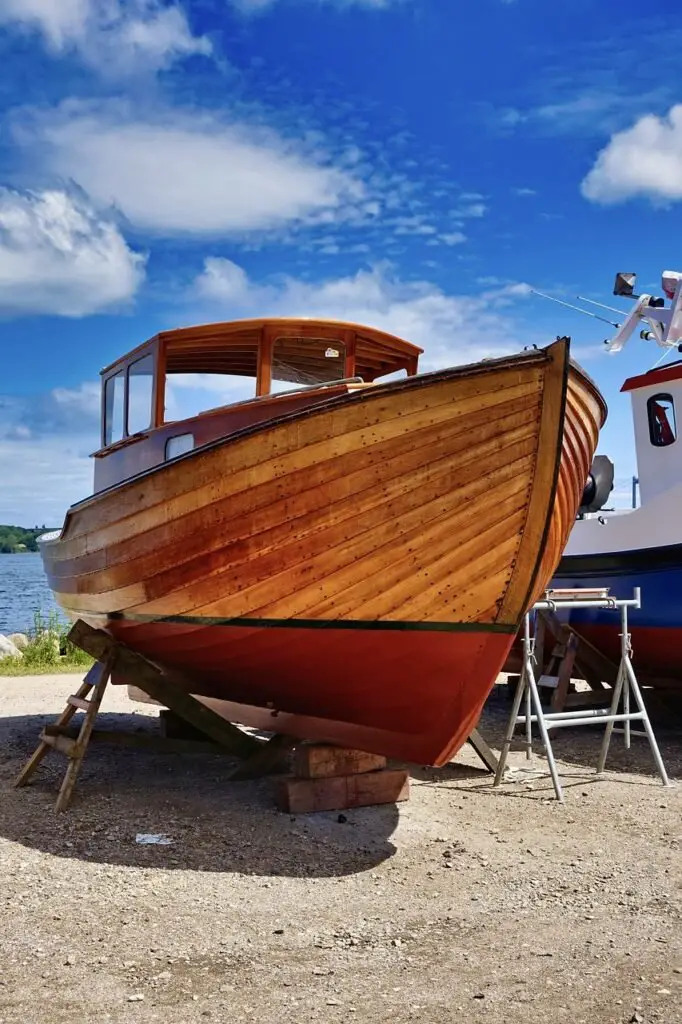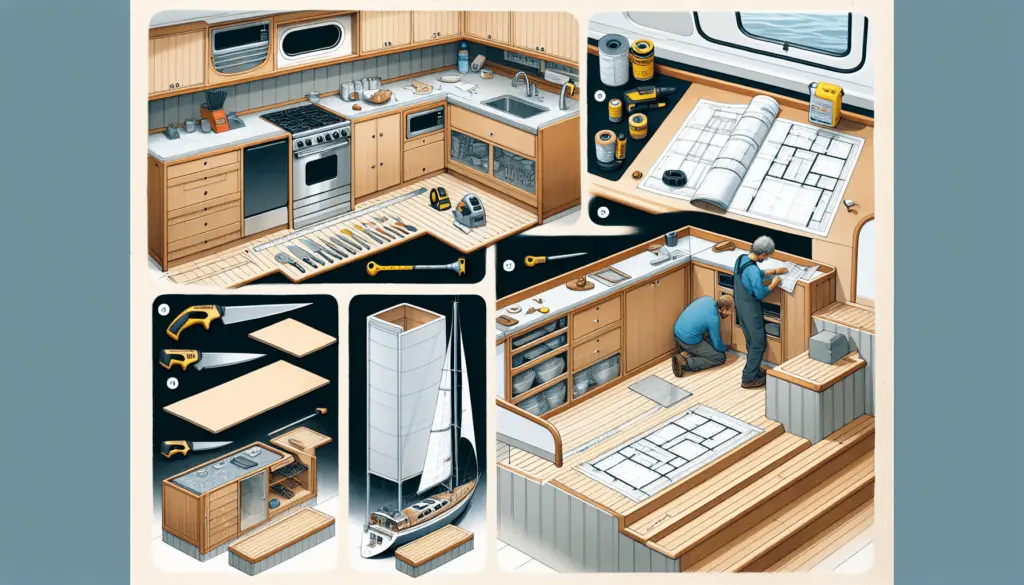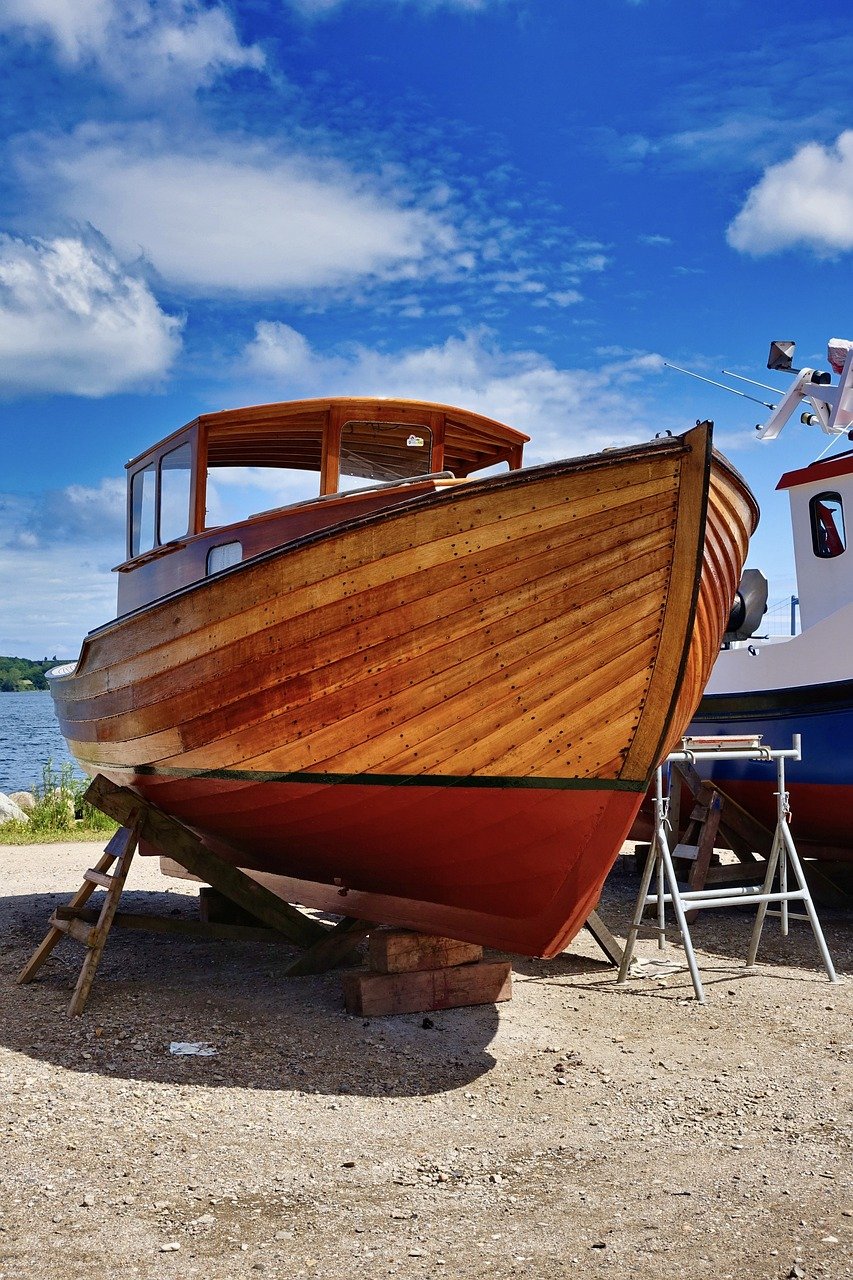Ready to upgrade your boat with a custom galley? Look no further! In this article, we will guide you through the step-by-step process of installing your very own custom galley on your boat. Whether you’re a seasoned sailor or a first-time boat owner, we’ve got you covered. Say goodbye to pre-packaged meals and hello to cooking delicious meals on your own boat. Get ready to impress your friends and family with your culinary skills while enjoying the open sea. Let’s dive in and transform your boat into the perfect gastronomic haven!

Choosing the Right Galley Design
When it comes to choosing the right galley design for your boat, it’s important to assess your needs and preferences. Think about how you will be using the galley and what features are essential for you. Are you someone who loves to cook and prepare elaborate meals, or do you prefer simple and quick dishes? Consider the amount of counter space, storage capacity, and the layout that would best suit your cooking style.
Another important factor to consider is the space constraints. Boats often have limited space, so it’s essential to choose a galley design that optimizes the available space. Take measurements of the area where you plan to install the galley and ensure that there is enough room for all the necessary components.
Researching different galley styles is also crucial before making a decision. There are various types of galley designs, including U-shaped, L-shaped, and straight-line configurations. Each of these designs offers its own advantages and limitations, so it’s important to understand the pros and cons of each style. Look for inspiration in boating magazines, online forums, and boat shows to get a good idea of what design would work best for your needs.
Lastly, don’t underestimate the importance of consulting with professionals. Whether it’s a boat designer, a marine architect, or a galley specialist, seeking expert advice can help you make informed decisions. They can provide valuable insights and suggestions based on their experience and expertise, ensuring that you choose the right galley design for your boat.
Preparing the Boat
Before you begin installing your custom galley, it’s important to properly prepare the boat. Start by clearing the work area and removing any existing fixtures that may be in the way. This includes old cabinets, countertops, sinks, and any other components that will be replaced.
Once the work area is clear, thoroughly clean and repair all surfaces. This may involve sanding wood, patching holes, or removing old adhesive residue. Cleaning the surfaces ensures a smooth and clean foundation for the galley installation. Additionally, inspect the boat for proper ventilation. Adequate ventilation is critical in a galley to prevent moisture buildup and mold growth.
Taking Measurements and Planning
Accurate measurements are crucial when planning your custom galley. Measure the available space thoroughly to ensure that your galley components fit properly. Take into account any irregularities or obstructions such as hatches, windows, or curves in the boat’s structure.
After measuring the space, create a galley layout that suits your needs. Consider the flow and functionality of the galley, ensuring that it is ergonomically designed for efficient workflow. Think about how you move around the galley when preparing meals and make sure there is enough space for all necessary appliances, cabinets, and countertops.
Selecting Galley Components
Choosing the right galley components is an important part of the installation process. Start by selecting cabinets and countertops that not only fit the space but also complement your desired aesthetic. Consider the material, color, and finish that will work best for your boat’s style and durability needs.
Next, decide on the sink and faucet that will be suitable for your galley. Consider the size and style of the sink, as well as the type of faucet that best suits your preferences. Stainless steel is a popular choice for boat sinks due to its durability and resistance to corrosion.
When it comes to selecting the stove or cooktop, consider the available fuel sources on your boat. Choose a stove or cooktop that works with your boat’s fuel system, whether it’s propane, electric, or a combination of both. Additionally, consider the size and cooking capabilities that fit your needs.
Don’t forget to pick the right appliances to complete your galley. This may include a refrigerator, microwave, or any other appliances that you deem necessary for your cooking and storage needs.

Electrical and Plumbing Considerations
Before proceeding with the installation, evaluate the power requirements for your galley. Ensure that your boat’s electrical system can handle the additional load of the galley components, including appliances and lighting fixtures. If necessary, consult with an electrician to ensure proper wiring and circuitry.
To properly plan and install the wiring, consider the location of outlets, switches, and lighting fixtures. Take into account safety regulations and consider the use of waterproof or marine-grade wiring materials.
When it comes to plumbing connections, it’s important to ensure proper installation. Make sure the sink and faucet connections are secure and leak-free. Consider using flexible hoses and marine-grade plumbing fittings to ensure durability and longevity in a marine environment.
Installing Galley Cabinets and Countertops
Securing and leveling the cabinets is an important step in the installation process. Use appropriate hardware to attach the cabinets to the boat’s structure securely. Ensure that the cabinets are level and plumb, using shims if necessary.
Once the cabinets are in place, it’s time to attach the countertops. Depending on the material chosen for the countertops, follow the manufacturer’s instructions for proper installation. Use sealants and adhesives as recommended to ensure a watertight and secure bond.
To complete the installation, consider adding backsplashes to protect the walls behind the countertops. Backsplashes not only add a decorative touch but also provide a practical barrier against water and food splashes.

Installing Plumbing Fixtures
Setting up the sink involves connecting the water supply lines and drain system. Follow the manufacturer’s instructions for proper installation. Use marine-grade hoses and fittings to ensure a secure and leak-free connection. Test the sink for proper water flow and check for any signs of leakage.
Next, connect the faucet to the water supply lines, ensuring a tight and secure connection. Make sure the faucet operates smoothly and adjust any settings or features as needed.
installing the drain system properly is crucial to prevent any issues with wastewater. Ensure the drain is properly connected and sealed to avoid any leaks or odors. Test the drain system by running water through the sink and check for any signs of leakage or improper drainage.
Installing Electrical Components
Wiring the galley requires careful planning and proper installation to ensure safety and functionality. Follow electrical codes and regulations to ensure compliance. If you’re not experienced with electrical work, it’s recommended to hire a professional electrician to handle this part of the installation.
Install lighting fixtures strategically to provide adequate illumination throughout the galley. Consider using waterproof or marine-grade fixtures to withstand the marine environment.
When connecting and testing appliances, ensure that they are properly grounded and functioning correctly. Test each appliance individually to verify full functionality and address any issues promptly.

Finishing Touches and Final Checks
Applying finishes and trim adds a polished look to your custom galley. Choose materials that are suitable for the marine environment and consider the ease of maintenance and cleaning. Apply finishes and trim according to the manufacturer’s instructions for best results.
Before considering the project complete, thoroughly check for proper fit and alignment of all components. Make sure that all doors, drawers, and cabinets open and close smoothly. Verify that the countertops are level and secure.
To ensure the water and electrical systems are fully functional, perform final checks. Test the water supply and drainage for any leaks or issues. Check all electrical connections and fixtures for proper functioning. Address any concerns or problems before considering your custom galley installation complete.
Maintaining and Upgrading Your Galley
Once your custom galley is installed, regular cleaning and maintenance are essential to keep it in optimal condition. Follow the manufacturer’s instructions for cleaning and maintenance of the various components and materials used in your galley. Regularly inspect for any signs of wear or damage and address them promptly.
Over time, you may decide to replace or upgrade certain components of your galley. This could include replacing worn-out countertops, upgrading appliances, or adding additional storage solutions. Keep an eye out for new and innovative galley components and consider how they can enhance the functionality and aesthetics of your galley.
Staying organized and efficient in your galley is crucial, especially in a limited space environment. Consider utilizing organizational tools, such as dividers, trays, and storage racks, to maximize storage and keep your galley neat and tidy. Efficiently utilizing your galley space will make cooking and meal prep more enjoyable and efficient.
By following these steps and considering all aspects of the installation, you can successfully install a custom galley on your boat. Remember to take your time, gather the necessary resources, and seek professional help when needed. With a well-designed and properly installed galley, you can enjoy preparing delicious meals and creating memorable moments on your boat.


